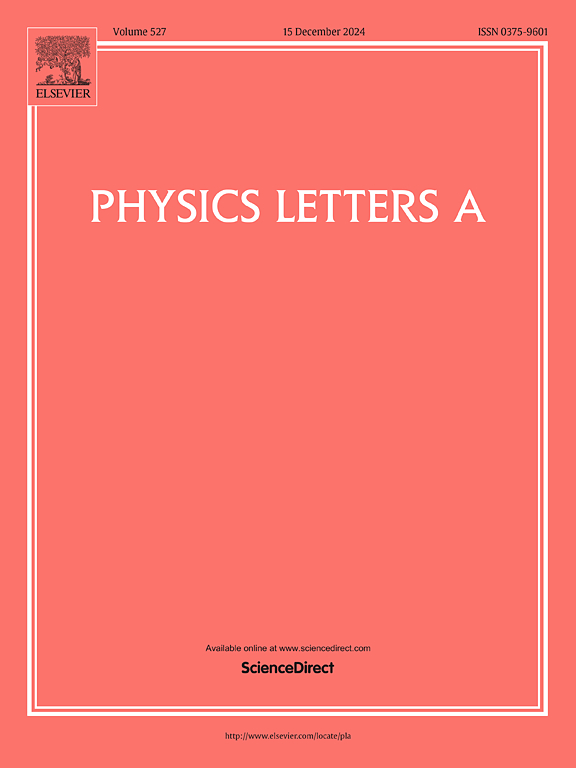快速可训练的浅编译最大似然检测量子近似优化算法
IF 2.3
3区 物理与天体物理
Q2 PHYSICS, MULTIDISCIPLINARY
引用次数: 0
摘要
在多输入多输出(MIMO)系统中,最大似然(ML)检测问题是np困难的,并且随着发射天线和符号的增加而变得越来越复杂。量子近似优化算法(QAOA)是运行在噪声中尺度量子(NISQ)器件上的主要候选算法,它在近似求解组合优化问题方面具有量子优势。本文提出了一种改进的基于QAOA的最大似然检测方法。在该方案中,我们使用zx -微积分证明了QAOA电路中的参数对称性,从而减少了搜索空间,加快了训练过程。此外,为了在量子器件上运行QAOA,提出了一种改进的同时门吸收的量子比特映射方法,该方法可以用较少的CNOT计数来编译QAOA的量子电路,以满足实际量子器件的连接约束。在数值实验中,我们的方案平均提高了29.8%的参数训练速度,并且在编译过程中使用了更少的CNOT门和更浅的电路深度。这表明我们的方案比传统的方案有明显的优势。本文章由计算机程序翻译,如有差异,请以英文原文为准。
Rapidly trainable and shallow-compiled quantum approximate optimization algorithm for maximum likelihood detection
In multiple-input and multiple-output (MIMO) systems, the maximum likelihood (ML) detection problem is NP-hard and becomes increasingly complex with more transmitting antennas and symbols. The quantum approximate optimization algorithm (QAOA), a leading candidate algorithm running in the noisy intermediate-scale quantum (NISQ) devices, can show quantum advantage for approximately solving combinatorial optimization problems. In this paper, we propose an improved QAOA based maximum likelihood detection. In the proposed scheme, we use ZX-calculus to prove the parameter symmetry in QAOA circuits, which can be used to reduce the search space and accelerate the training process. Moreover, to run QAOA on quantum devices, an improved qubit mapping method with simultaneous gate absorption is proposed, which can compile the quantum circuit of the QAOA to satisfy the connectivity constraints of real quantum devices with fewer CNOT counts. In numerical experiments, our scheme accelerates parameter training by an average of 29.8% and uses fewer CNOT gates and shallower circuit depth during compilation. This demonstrates that our scheme has significant advantages over the traditional scheme.
求助全文
通过发布文献求助,成功后即可免费获取论文全文。
去求助
来源期刊

Physics Letters A
物理-物理:综合
CiteScore
5.10
自引率
3.80%
发文量
493
审稿时长
30 days
期刊介绍:
Physics Letters A offers an exciting publication outlet for novel and frontier physics. It encourages the submission of new research on: condensed matter physics, theoretical physics, nonlinear science, statistical physics, mathematical and computational physics, general and cross-disciplinary physics (including foundations), atomic, molecular and cluster physics, plasma and fluid physics, optical physics, biological physics and nanoscience. No articles on High Energy and Nuclear Physics are published in Physics Letters A. The journal''s high standard and wide dissemination ensures a broad readership amongst the physics community. Rapid publication times and flexible length restrictions give Physics Letters A the edge over other journals in the field.
 求助内容:
求助内容: 应助结果提醒方式:
应助结果提醒方式:


